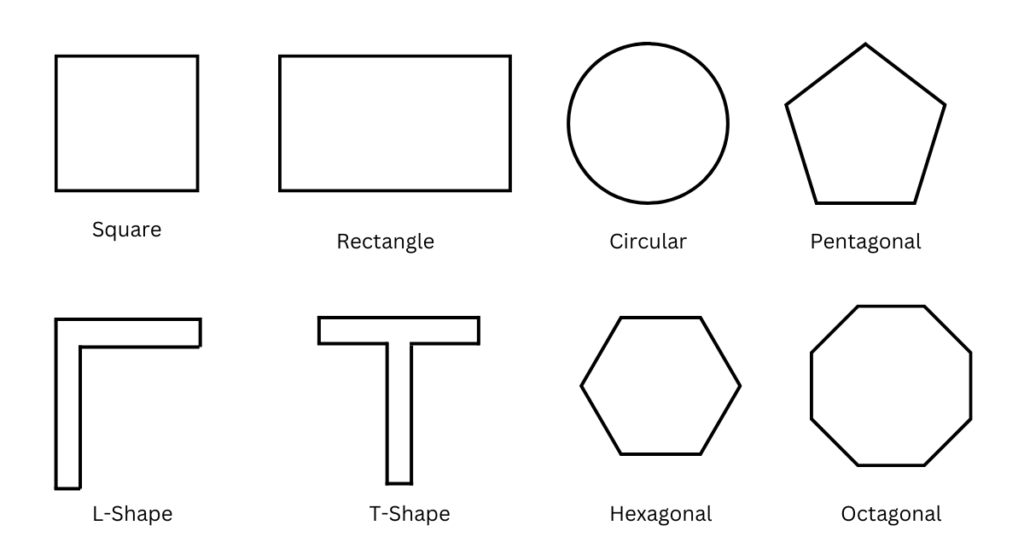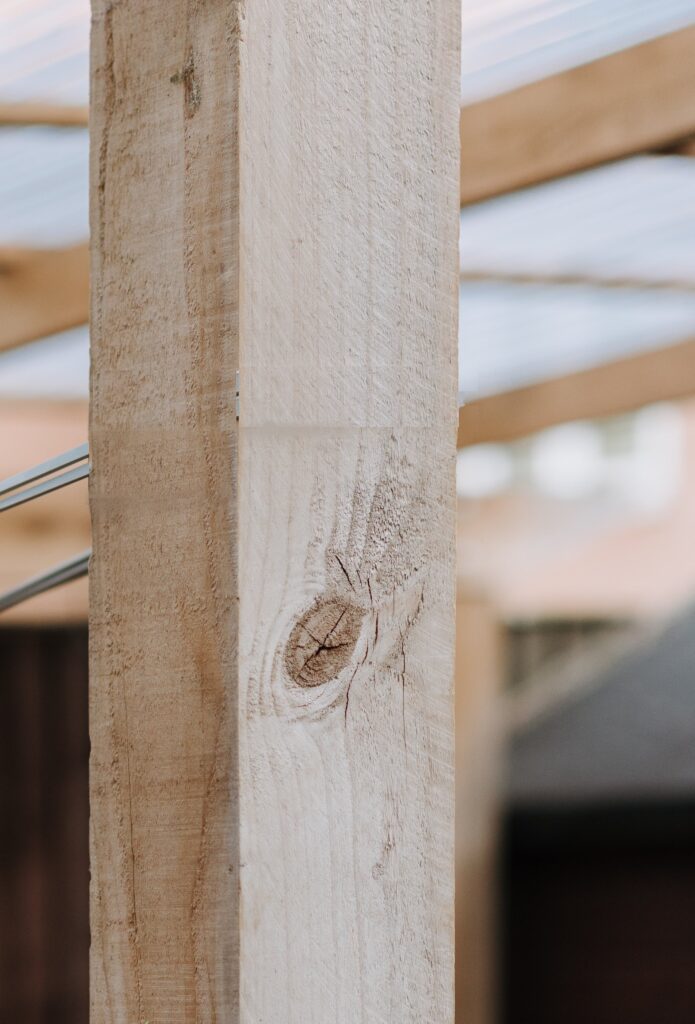Columns are essential structural elements in construction that provide vertical support and distribute loads to the foundation. These are used to transfer the superstructure’s load to the foundation safely. Compression members, columns, struts, and pedestals are mostly utilized in industries, buildings, bridges, tank support systems, and many other types of constructions.
CLASSIFICATION OF COLUMNS
Columns are classified based on different criteria such as:
1. Shapes of cross-section
2. Material of construction
3. Type of loading
4. Slenderness ratio
5. Type of lateral reinforcement
1. Shapes of Cross-section

Based on the shape of the cross-section of the column, they are classified into the following types:
(i) Square
(ii) Rectangular
(iii) Circular
(iv) Pentagonal
(v) Hexagonal
(vi) Octagonal
(vii) T-shape or L-shape etc.
2. Material of construction
The choice of material significantly impacts the strength of the column. The following types of materials are used in column construction:
(i) Timber Column

Timber columns are generally used for light loads. They are utilized in timber homes and small trusses. These are called posts.
(ii) Masonry Column

These are used for light loads.
(iii) R.C.C. Column
R.C.C. columns are used for mostly all types of buildings and other R.C.C. structures like tanks, bridges, etc.
(iv) Steel Column
Steel columns are used for heavy loads.
(v) Composite Column
Composite columns are used for very heavy loads. They consist of steel sections like joists (I or H sections) embedded in R.C.C. section.
3. Type of loading
According to the type of loading, a column can be categorized as follows:
(i) axially loaded columns.
(ii) eccentrically loaded columns.
(i) Axially loaded column
The columns which are subjected to loads acting along the longitudinal axis or centroid of the column section are called as axially loaded columns. A column that is axially loaded only experiences direct compressive stress and no bending stress occurs within the column section.
(ii) Eccentrically loaded columns
Eccentrically loaded columns are those columns in which the loads do not act on the longitudinal axis of the column. Both direct compressive stress and bending stress are applied to them. Uniaxial bending could happen to columns that are eccentrically loaded.
4. Slenderness ratio
The slenderness ratio is an important parameter that indicates the stability of a column under axial compression. It is calculated by dividing the effective length of the column by its least lateral dimension.
There are two types of columns depending upon the slenderness ratio:
(i) Short column
The column is considered as short when the slenderness ratio of column i.e., ratio of effective length to its least lateral dimension is less than or equal to 12.
(ii) Long column
If the slenderness ratio of the column is greater than 12, it is called as long or slender column.
5. Type of lateral reinforcement
An R.C.C. column has longitudinal and lateral reinforcement. They can also be categorized according to how the longitudinal steel is tied or supported laterally.
(i) Column supported by longitudinal steel and lateral ties.
(ii) Column with longitudinal steel and spiral ties.
(i) In this type of arrangement the longitudinal bars are tied laterally at suitable internals with the Som help of ties.
(ii) The longitudinal bars are tied continuously with the help of spiral reinforcement. The columns with helical or spiral reinforcement are thus they increase the buckling resistance and ductility of the column.
EFFECTIVE LENGTH OF THE COLUMN
The effective length of a column is the length between the points of contraflexure, where the column is free to rotate and undergo lateral displacement. It affects the stability of the column and determines the critical buckling load. The unsupported length of a column is the clear length or height between the floor and the lower level of the ceiling.
DIFFERENCE BETWEEN LONG COLUMN AND SHORT COLUMN
Short Column
1. A column is considered to be short if the ratio of effective length to its least lateral dimension is less than or equal to 12.
2. The ratio of the effective length of a short column to its least radius of gyration is less than or equal to 40.
3. Buckling tendency is very low.
4. The load-carrying capacity is high as compared to long columns of the same cross-sectional area. 5. The failure of the short column is by crushing.
Long Column
1. A column is considered to be long if the ratio of the effective length of the column to its least lateral dimension is greater than 12.
2. The ratio of the effective length of a long column to its least radius of gyration is greater than 40.
3. Long and slender columns buckle easily. In comparison to a short column with the same cross-sectional area, a long column has a less load carrying capacity.
4. The column generally fails in buckling.
REINFORCEMENT IN A COLUMN

Concrete is strong in compression. Thus, a column can be made up of plain concrete but it is always advisable to use R.C.C. columns rather than the plain concrete columns because of the following reasons:
1. A plain concrete column requires very large area as compared to R.C.C. columns. The steel can take load that is m times greater than that of concrete in the same space. For a particular load, the R.C.C. columns will be much thinner than that of plain concrete. Thus R.C.C. columns are preferred than plain concrete columns as it consumes less space.
2. A minimum area of steel is always provided in the column whether it is required for carrying load or not. It is done to withstand tensile stresses which may be caused due to eccentricity of loads.
Two types of reinforcements provided in a R.C.C. column:
(a) Longitudinal reinforcement
(b) Transverse reinforcement
(a) Longitudinal Reinforcement
The longitudinal reinforcement consists of steel bars placed longitudinally in a column. It is also called main steel. The functions of longitudinal reinforcement are given below:
(i) To share the compressive loads along with concrete, thus reducing the overall size of the column and leaving more usable area.
(ii) To resist tensile stresses developed due to any moment or accidental eccentricity.
(iii) To impart ductility to the column.
(iv) To reduce the effect of creep and shrinkage due to continuous constant loading applied for a long time.
(b) Transverse Reinforcement
The transverse reinforcement is provided along the lateral direction of the column in the form of ties or spirals enclosing the main steel. The function of transverse steel are as follows:
(i) To hold the longitudinal bars in the position.
(ii) To prevent the buckling of the main longitudinal bars.
(iii) To resist diagonal tension caused due to transverse shear developed because of any moment or load.
(iv) To impart ductility to the column.
(v) To prevent longitudinal splitting or bulging.
You may also like to read:
What is framed structure? |Types and Advantages|
Load bearing Structure & Framed Structure |Components and Advantages|


